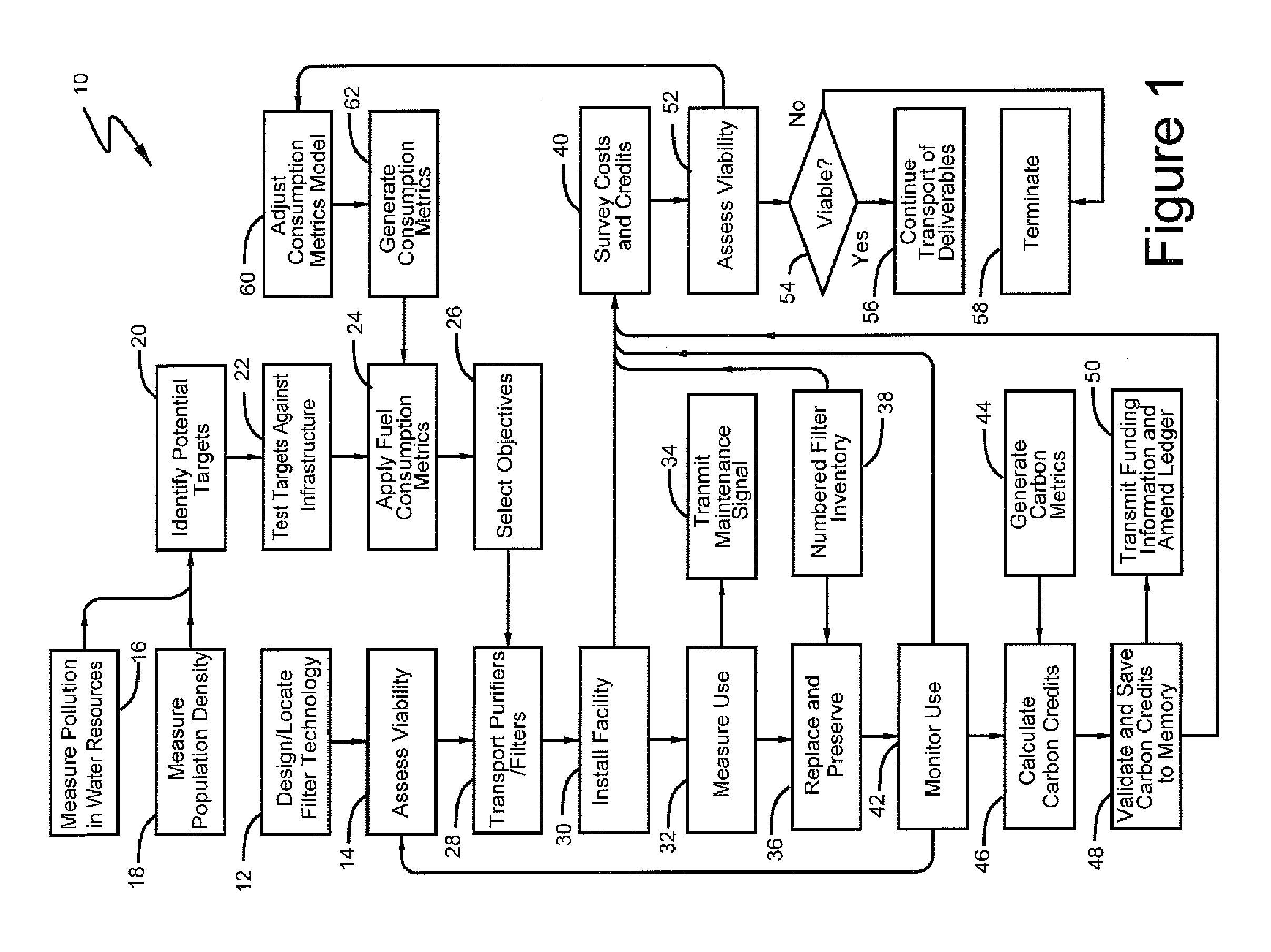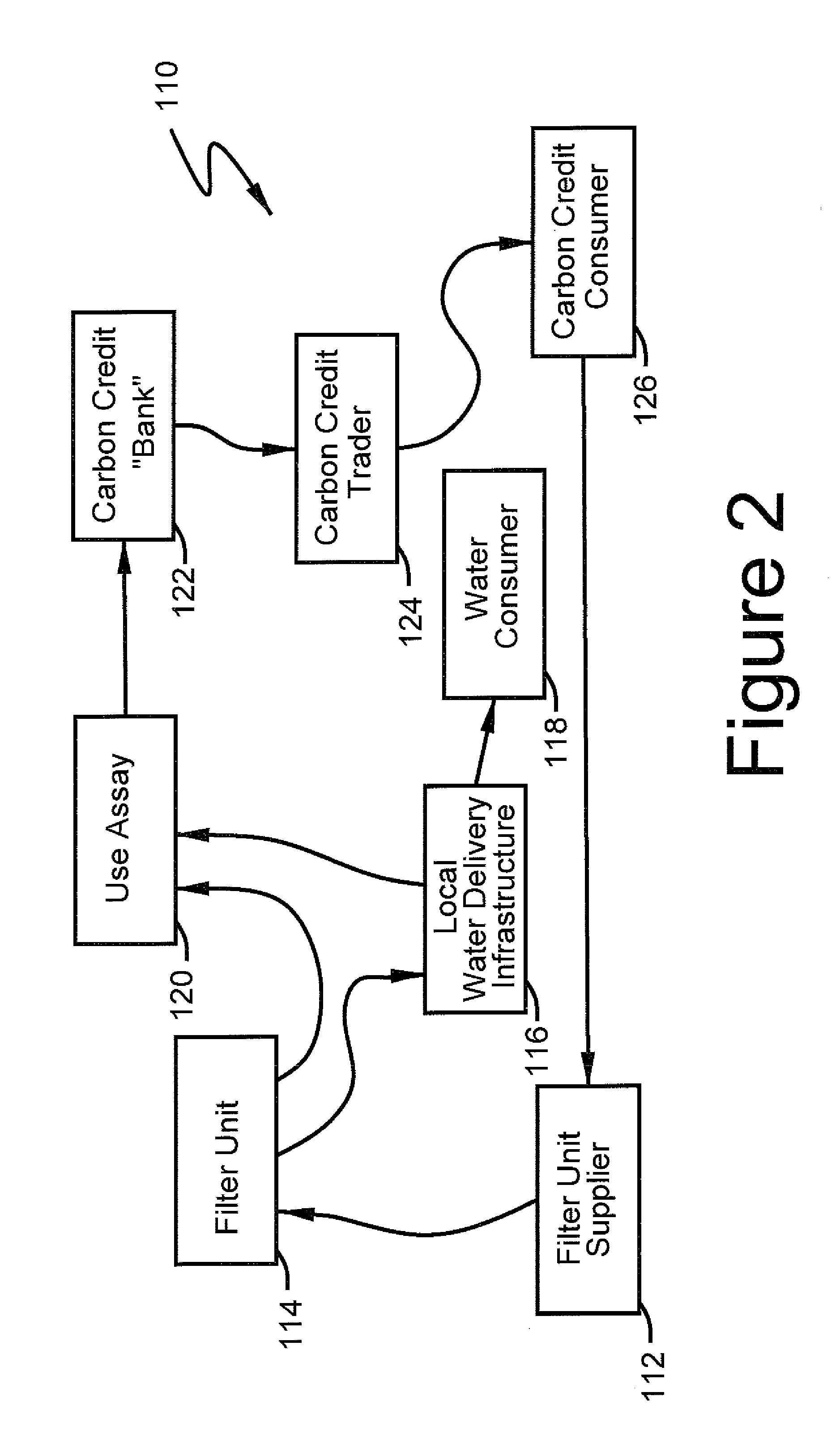Water purification apparatus and method
a technology of water purification apparatus and water filter, applied in the field methods, can solve the problems of low efficiency of water purification apparatus, low-tech solutions, and economic implementation obstacles of relatively high-tech solutions, so as to reduce the use of wood fuel, reduce the need for boiling, and reduce the effect of emissions
- Summary
- Abstract
- Description
- Claims
- Application Information
AI Technical Summary
Benefits of technology
Problems solved by technology
Method used
Image
Examples
Embodiment Construction
[0036]Filter-based water purification is a point-of-use microbial water treatment system. In accordance with the invention, it is used in routine tasks in low-income settings. A typical filter system can filter up to 18,000 liters of water, enough to supply a family of five with microbiologically clean drinking water for three years, thus removing the need for repeat intervention. Filters are a clean technology and require no electricity or additional consumables beyond the unit itself Filter-based water purification complies with the U.S. Environmental Protection Agency's “Guide Standard and Protocol for Testing Microbiological Water Purifiers,” providing treated water that is as-good or better than boiling from the standpoint of lack of microbiological contamination.
[0037]Filter-based water purification reduces the need to boil water for safe consumption. Reduction in boiling directly leads to reduced carbon dioxide emissions. The inventive method abates the use of firewood, there...
PUM
 Login to View More
Login to View More Abstract
Description
Claims
Application Information
 Login to View More
Login to View More - R&D
- Intellectual Property
- Life Sciences
- Materials
- Tech Scout
- Unparalleled Data Quality
- Higher Quality Content
- 60% Fewer Hallucinations
Browse by: Latest US Patents, China's latest patents, Technical Efficacy Thesaurus, Application Domain, Technology Topic, Popular Technical Reports.
© 2025 PatSnap. All rights reserved.Legal|Privacy policy|Modern Slavery Act Transparency Statement|Sitemap|About US| Contact US: help@patsnap.com



